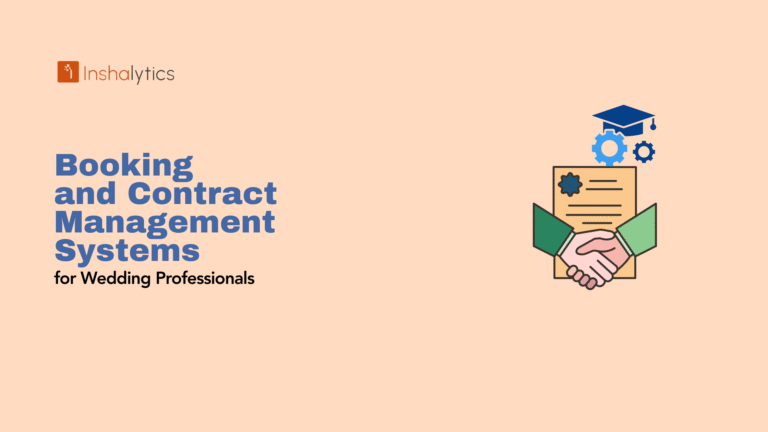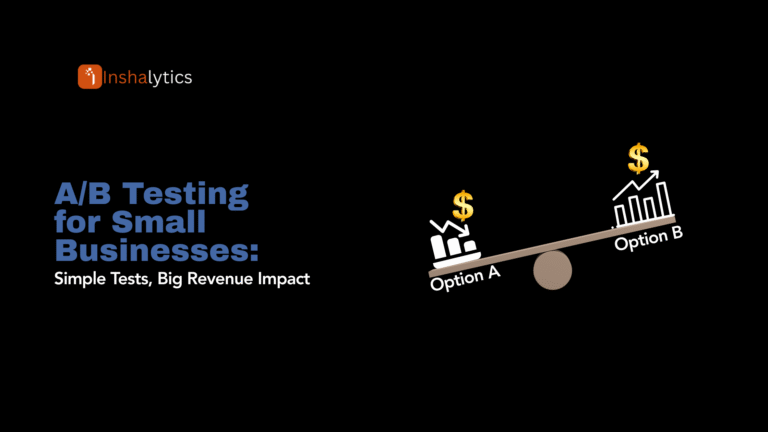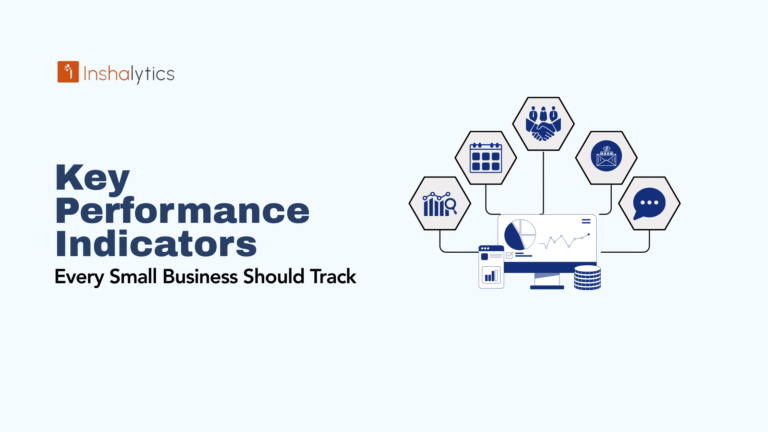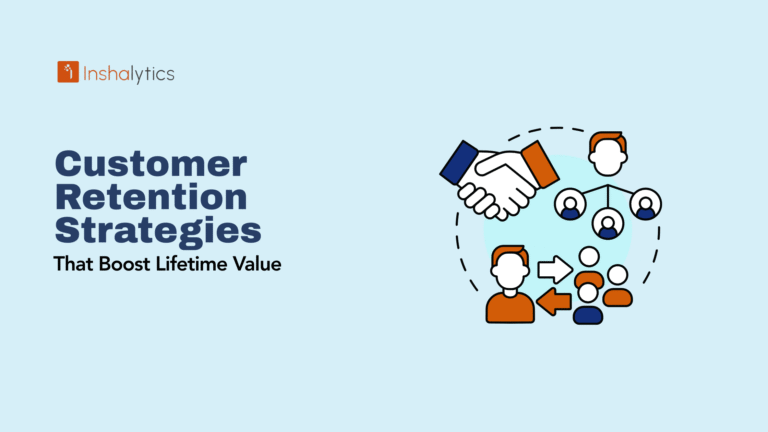Running a small business is like navigating a ship through unpredictable waters. While you might have a profitable voyage ahead, without proper cash flow management, you could find yourself sinking even when your destination looks promising. This comprehensive guide provides practical, actionable strategies to help small business owners master their cash flow and build sustainable financial foundations.
Why Cash Flow Management Matters More Than Profit for Small Businesses?
The 82% Problem: How Poor Cash Flow Kills Small Businesses
The statistics are sobering: 82% of small business failures stem from poor cash flow management or inadequate understanding of cash flow dynamics. This means that even businesses showing strong sales and apparent profitability on paper can collapse due to cash flow problems.
The issue isn’t always obvious. A business might secure a major contract worth $50,000, but if payment terms extend 90 days while operational expenses continue daily, that “profitable” deal could actually threaten the company’s survival. This disconnect between profit on paper and actual cash availability creates a dangerous blind spot for many entrepreneurs.
Consider the common scenario where rapid growth becomes a cash flow killer. As sales increase, businesses must invest more upfront in inventory, labor, and operational capacity. If there’s a significant gap between when money goes out and when customer payments come in, growth can paradoxically lead to cash starvation.
Cash Flow vs. Profit: Understanding the Critical Difference
Profit and cash flow serve different purposes in business health assessment. Profit represents the theoretical success of your business model – revenue minus expenses over a specific period. Cash flow, however, reflects your actual ability to pay bills, meet payroll, and keep operations running day-to-day.
A business can be profitable while being cash flow negative, especially in scenarios involving:
- Extended payment terms with customers (30, 60, or 90-day invoices)
- Seasonal businesses with irregular income patterns
- Companies requiring significant upfront inventory investments
- Service businesses with project-based payment structures
Understanding this distinction helps business owners prioritize cash availability over paper profits, ensuring they can weather temporary downturns and capitalize on growth opportunities when they arise.
Essential Cash Flow Management Strategies Every Small Business Needs
Create and Monitor Your Cash Flow Statement
Your cash flow statement serves as the financial heartbeat monitor for your business. Unlike profit and loss statements that can include non-cash items, cash flow statements track only actual money movement – in and out of your business accounts.
A proper cash flow statement includes three main categories:
Operating Activities: Day-to-day business transactions, including customer payments, supplier payments, payroll, rent, utilities, and other operational expenses. This section reveals whether your core business operations generate positive cash flow.
Investing Activities: Money spent on or received from long-term assets like equipment, property, or business acquisitions. These transactions typically involve larger amounts and affect your business’s future earning capacity.
Financing Activities: Cash movements related to funding your business, including loans, investor contributions, debt payments, and owner distributions. This section shows how you’re financing your operations and growth.
Monitor your cash flow statement weekly, not monthly. Weekly reviews allow you to spot trends early and make adjustments before small issues become major problems. Look for patterns in payment timing, seasonal fluctuations, and the relationship between sales activity and actual cash receipts.
Develop Accurate Cash Flow Forecasting
Cash flow forecasting transforms you from reactive to proactive in financial management. A good forecast projects your expected cash position 13 weeks ahead, giving you sufficient time to address potential shortfalls or capitalize on cash surpluses.
Start with your current cash position, then add projected inflows based on:
- Confirmed sales with known payment schedules
- Recurring revenue streams with established patterns
- Seasonal trends from previous years
- Pipeline opportunities with estimated closing probabilities
Subtract projected outflows, including:
- Fixed expenses (rent, insurance, loan payments)
- Variable costs tied to sales volume
- Planned capital expenditures
- Tax obligations and other periodic payments
Update your forecast weekly with actual results and revised projections. Pay special attention to the timing of large receipts or payments, as these can significantly impact your cash position. Create best-case, worst-case, and most-likely scenarios to prepare for various outcomes.
Implement Proactive Invoice Management
Your invoicing process directly impacts cash flow timing. The faster you invoice, the sooner you get paid – it’s that simple. Yet many businesses treat invoicing as an end-of-month administrative task rather than a critical cash flow tool.
Establish these invoicing best practices:
Invoice Immediately: Send invoices the same day you deliver products or complete services. Don’t wait for month-end or project completion unless contractually required.
Clear Payment Terms: Specify exact payment due dates, accepted payment methods, and any early payment discounts or late payment penalties. Ambiguous terms lead to delayed payments.
Professional Presentation: Well-designed invoices with clear line items, contact information, and payment instructions get processed faster than hastily created documents.
Follow-Up System: Implement automatic reminders at 15, 30, and 45 days past due. Personal follow-up calls often work better than automated emails for significant amounts.
Optimize Your Accounts Receivable Process
Accounts receivable represent money you’ve earned but haven’t collected – essentially an interest-free loan to your customers. The longer money stays in receivables, the more it impacts your cash flow.
Track your accounts receivable aging regularly. Categorize outstanding invoices by age: 0-30 days, 31-60 days, 61-90 days, and over 90 days. Invoices over 90 days old have significantly lower collection probabilities and may require write-offs.
Calculate your average collection period by dividing total accounts receivable by average daily sales. If your payment terms are net 30 but your average collection period is 45 days, you’re providing an extra 15 days of financing to customers – financing that impacts your cash availability.
Consider offering early payment discounts (2/10 net 30 means 2% discount if paid within 10 days, full amount due in 30 days). While this reduces revenue slightly, it can significantly improve cash flow and reduce collection costs.
Strategic Accounts Payable Management
While you want customers to pay quickly, strategic management of your own payment timing can optimize cash flow. This doesn’t mean paying late or damaging supplier relationships – it means being intentional about payment timing.
Negotiate payment terms that align with your cash flow cycle. If you typically collect from customers in 45 days, try to secure 30-45 day terms with suppliers. This alignment reduces the gap between cash outflows and inflows.
Take advantage of early payment discounts when they make financial sense. A 2/10 net 30 discount is equivalent to a 36% annual interest rate – often worth taking if you have available cash.
Prioritize payments based on their impact on your business operations. Critical suppliers, payroll, and payments affecting your credit score should take precedence over less essential expenses that can be delayed if necessary.
Proven Techniques to Improve Your Cash Flow
Speed Up Customer Payments
Early Payment Discounts and Incentives
Early payment discounts serve as a powerful tool to accelerate cash receipts. A typical 2/10 net 30 structure offers customers a 2% discount for payment within 10 days versus the full amount due in 30 days. While this reduces your revenue margin, the improved cash flow often justifies the cost.
Calculate the true cost of early payment discounts by annualizing the rate. The 2/10 net 30 example costs about 36% annually (2% for 20 days early payment), which might be acceptable if it eliminates collection costs and reduces bad debt risk.
Consider tiered discount structures for larger invoices or strategic customers. A 3% discount for immediate payment, 2% for 10-day payment, and 1% for 20-day payment gives customers multiple incentives while improving your cash position.
Beyond discounts, explore other incentives like priority service for fast-paying customers or exclusive access to new products. These non-monetary incentives can motivate prompt payment without directly impacting profit margins.
Automated Invoicing Systems
Automation eliminates delays in your invoicing process and ensures consistency in timing and format. Modern invoicing software can generate and send invoices based on delivered orders, completed services, or predetermined schedules.
Set up automatic invoice generation for recurring services or products. Subscription-based or maintenance contract customers should receive invoices on specific dates each month, creating predictable cash inflows.
Implement automatic payment reminders at predetermined intervals. A professional reminder system maintains customer relationships while ensuring payment obligations stay visible.
Consider offering automated payment options like ACH transfers or stored credit card charges for recurring customers. Automated payments eliminate the delay between invoice receipt and payment processing while reducing administrative costs.
Clear Payment Terms and Follow-Up
Ambiguous payment terms lead to customer confusion and delayed payments. Your invoices should specify exact payment due dates, acceptable payment methods, and any penalties for late payment.
Instead of “payment due in 30 days,” use specific dates: “Payment due by March 15, 2024.” This eliminates any confusion about when the 30-day period begins.
Establish a systematic follow-up process that escalates appropriately. Start with friendly automated reminders, progress to personal phone calls, and finally involve collection agencies or legal action for significantly overdue accounts.
Document all customer communications regarding payments. This record-keeping proves essential if disputes arise or legal action becomes necessary.
Control Your Cash Outflow
Categorize and Analyze Your Expenses
Understanding your expense patterns enables better cash flow management. Categorize expenses into fixed costs (rent, insurance, loan payments) and variable costs (materials, commissions, utilities) to understand your minimum monthly cash requirements.
Further breakdown variable costs into controllable and uncontrollable categories. Controllable expenses like marketing spend or discretionary purchases can be adjusted during tight cash periods, while uncontrollable expenses like credit card processing fees fluctuate with sales volume.
Analyze expense timing to identify optimization opportunities. If possible, align large expense payments with periods of strong cash inflows. Schedule equipment maintenance during high-revenue months rather than slow periods.
Regular expense reviews help identify cost creep – the gradual increase in spending that can erode cash flow. Monthly subscription services, in particular, tend to accumulate over time without regular scrutiny.
Negotiate Better Payment Terms with Suppliers
Your payment terms with suppliers directly impact cash flow timing. Extending payment terms from net 15 to net 30 provides an additional 15 days of cash availability without additional cost.
Approach supplier negotiations professionally, emphasizing the mutual benefits of extended terms. Reliable payment history and larger order volumes provide leverage in these discussions.
Consider offering trade-offs that benefit suppliers while improving your terms. Signing longer-term contracts, providing marketing support, or agreeing to minimum purchase volumes might justify extended payment terms.
Explore early payment discounts from suppliers during periods of strong cash flow. Just as you offer discounts to accelerate customer payments, suppliers often provide similar incentives.
Build Strategic Cash Reserves
Cash reserves provide flexibility during unexpected downturns or opportunities for growth investments. Most financial experts recommend maintaining 3-6 months of operating expenses in reserve, though the exact amount depends on business stability and industry factors.
Build reserves gradually by setting aside a percentage of revenue during profitable periods. Even 5-10% of monthly revenue adds up significantly over time and creates a financial cushion.
Keep reserve funds in easily accessible accounts earning modest returns. While the temptation exists to invest reserves for higher returns, liquidity remains the primary consideration.
Establish clear criteria for using reserve funds. Reserves should address genuine emergencies or significant opportunities, not cover poor cash flow management or lifestyle expenses.
Leverage Technology for Cash Flow Management
Accounting Software Solutions
Modern accounting software automates many cash flow management tasks while providing real-time visibility into your financial position. Cloud-based solutions offer access from anywhere and automatic data backup.
Choose software that integrates invoicing, expense tracking, and cash flow forecasting. Integration eliminates duplicate data entry and ensures consistency across financial reports.
Look for software offering automated bank reconciliation, which saves time and reduces errors in cash position tracking. Daily bank feed updates provide current cash balances without manual entry.
Many accounting platforms offer cash flow forecasting tools that project future positions based on historical patterns and current receivables/payables. These automated forecasts provide starting points for your planning, though manual adjustments remain important.
Cash Flow Management Apps and Tools
Specialized cash flow management tools often provide more detailed analysis and forecasting capabilities than general accounting software. These tools focus specifically on cash movement patterns and timing.
Some applications offer scenario modeling, allowing you to test different assumptions about customer payment timing, seasonal variations, or growth projections. This modeling capability helps with strategic planning and risk assessment.
Mobile apps enable real-time expense tracking and approval workflows for team members. Immediate expense capture eliminates the delay between spending and recording, improving cash flow visibility.
Integration capabilities matter significantly when choosing specialized tools. Ensure any cash flow app can connect with your existing accounting software, bank accounts, and payment processors to avoid manual data entry.
Advanced Cash Flow Strategies for Business Growth
Seasonal Cash Flow Planning
Many businesses experience predictable seasonal patterns that require specific cash flow strategies. Retail businesses peak during holidays, landscaping companies surge in spring and summer, while tax preparation services concentrate activity in early spring.
Map your seasonal patterns using historical data to identify peak and valley periods. Understanding these cycles allows you to prepare financially for slow periods and capitalize on busy seasons.
Build seasonal working capital during peak periods to carry you through slower months. A lawn care company, for example, should save summer profits to cover winter expenses when revenue drops significantly.
Consider complementary revenue streams that offset seasonal patterns. A tax preparation business might offer bookkeeping services during the off-season, while a landscaping company could add snow removal services.
Seasonal businesses often benefit from seasonal credit lines that expand during peak periods and contract during slow times. This flexible financing matches borrowing capacity with actual cash needs.
Inventory Management for Better Cash Flow
For product-based businesses, inventory represents cash tied up in unsold goods. Efficient inventory management balances having sufficient stock to meet demand while minimizing cash investment.
Implement inventory turnover analysis to identify slow-moving products that tie up cash unnecessarily. Calculate turnover rates for different product categories and focus purchasing on high-turnover items.
Explore just-in-time ordering for appropriate products. While this approach requires reliable suppliers and accurate demand forecasting, it can significantly reduce inventory investment.
Consider consignment arrangements with suppliers for slow-moving or seasonal items. Consignment eliminates upfront inventory investment while maintaining product availability.
Negotiate return policies with suppliers for unsold seasonal merchandise. The ability to return unsold inventory reduces financial risk and improves cash flow flexibility.
Access to Credit and Financing Options
Establishing credit relationships before you need them provides flexibility during cash flow challenges. Banks prefer lending to businesses during strong periods rather than crisis situations.
A business line of credit offers the most flexible financing for cash flow management. You pay interest only on amounts actually borrowed, and funds are available immediately when needed.
Traditional term loans work better for specific purchases or investments rather than general cash flow management. However, term loan proceeds can fund growth initiatives that improve long-term cash flow.
Invoice factoring converts receivables into immediate cash, though at a cost. Factoring companies typically advance 80-90% of invoice value immediately, collecting the remainder (minus fees) when customers pay.
Equipment financing allows you to acquire necessary assets without major upfront cash investment. Spreading equipment costs over time preserves cash for operational needs.
Working Capital Optimization
Working capital – the difference between current assets and current liabilities – represents the funds available for daily operations. Optimizing working capital improves cash flow without requiring external financing.
Focus on the cash conversion cycle: the time between spending money on inventory or services and collecting cash from customers. Shorter cycles improve cash flow by accelerating the return on invested funds.
Reduce inventory levels through better demand forecasting and supplier relationships. Less inventory means less cash tied up in unsold goods.
Extend payment terms with suppliers while maintaining good relationships. Longer payment periods keep cash available longer without borrowing costs.
Accelerate customer collections through improved invoicing processes, payment incentives, and follow-up procedures. Faster collections reduce the amount of cash tied up in receivables.
Warning Signs and Troubleshooting Cash Flow Problems
Early Warning Signs Your Cash Flow Is in Trouble
Recognizing cash flow problems early allows for corrective action before situations become critical. Many warning signs appear gradually, making regular monitoring essential.
Increasing Days Sales Outstanding (DSO): If customers are taking longer to pay invoices, your DSO will increase. Track this metric monthly and investigate increases promptly.
Growing Accounts Payable: While extending payments can help short-term cash flow, consistently growing payables indicates insufficient operating cash flow.
Declining Cash Balances: Obvious but often ignored, steadily declining cash balances signal that outflows exceed inflows consistently.
Relying on Credit for Operations: Using credit cards or lines of credit to pay routine operational expenses indicates inadequate operating cash flow.
Delayed Vendor Payments: When you start delaying payments to suppliers or asking for extended terms frequently, cash flow stress is evident.
Payroll Concerns: Difficulty meeting payroll obligations represents a serious cash flow crisis requiring immediate attention.
Emergency Cash Flow Recovery Strategies
When cash flow problems become acute, immediate action can prevent business failure. Emergency strategies often involve uncomfortable decisions, but decisive action preserves the business for recovery.
Accelerate Collections: Contact all customers with outstanding invoices immediately. Offer significant early payment discounts for immediate payment, even if the discount seems expensive.
Liquidate Excess Assets: Sell unused equipment, excess inventory, or non-essential assets to generate immediate cash. While this may impact long-term efficiency, it preserves short-term survival.
Negotiate Payment Delays: Contact major suppliers and creditors to negotiate temporary payment delays or restructured payment plans. Most suppliers prefer modified payment terms to unpaid invoices.
Emergency Financing: Explore emergency lending options, including SBA emergency loans, merchant cash advances, or invoice factoring. While these options may be expensive, they can provide crucial bridge financing.
Reduce Operating Expenses: Temporarily eliminate all non-essential expenses. This might include suspending marketing, delaying equipment maintenance, or reducing hours of operation.
When to Seek Professional Help?
Cash flow problems often require expertise beyond typical business management skills. Professional assistance can provide objective analysis and access to resources unavailable to individual business owners.
Accountants and CFOs: Financial professionals can analyze your situation objectively and recommend specific improvements to cash flow management processes.
Business Consultants: Management consultants often have experience with cash flow crises and can provide strategic guidance for recovery and prevention.
Attorneys: Legal professionals become necessary when collection issues arise or when negotiating with creditors requires formal agreements.
Turnaround Specialists: For severe cash flow crises threatening business survival, turnaround specialists have experience managing business recovery processes.
Bankers: Your business banker can often provide insights into financing options and may offer temporary accommodations during difficult periods.
Seek help early rather than waiting until the situation becomes desperate. Professional assistance is more effective and less expensive when engaged proactively rather than reactively.
Building a Sustainable Cash Flow Management System
Creating Cash Flow Policies for Your Team
Effective cash flow management requires team-wide commitment and understanding. Everyone in your organization impacts cash flow through their decisions and actions.
Invoice Processing Policies: Establish clear procedures for invoice creation, approval, and delivery. Specify who can authorize invoices and the required turnaround times for different types of transactions.
Expense Approval Policies: Create spending authorization limits and approval processes that prevent unexpected cash outflows. Different expense categories may require different approval levels.
Customer Credit Policies: Establish criteria for extending credit to customers, including credit checks, payment history requirements, and maximum credit limits.
Collection Procedures: Document systematic approaches to collecting overdue accounts, including timing of contacts, escalation procedures, and when to involve outside collection agencies.
Train team members on how their roles impact cash flow. Sales team members should understand payment terms and collection procedures, while operations staff should know how their spending decisions affect cash availability.
Regular Financial Reviews and Adjustments
Cash flow management requires ongoing attention rather than periodic reviews. Establish regular financial review meetings to monitor performance and adjust strategies as needed.
Weekly Cash Flow Reviews: Monitor current cash position, immediate receivables and payables, and short-term cash needs. Weekly reviews allow for quick adjustments when problems arise.
Monthly Performance Analysis: Compare actual cash flow results to forecasts and budgets. Identify variances and adjust future projections based on actual performance patterns.
Quarterly Strategic Reviews: Evaluate the effectiveness of cash flow management policies and procedures. Consider changes in business operations or market conditions that might require policy adjustments.
Document changes to cash flow management procedures and communicate updates to relevant team members. Consistency in execution requires clear communication of policies and procedures.
Long-term Cash Flow Planning for Growth
Sustainable businesses plan cash flow management strategies that support long-term growth rather than just addressing immediate needs. Growth requires cash investment before generating returns, making planning crucial.
Growth Investment Planning: Identify cash requirements for expansion plans, including equipment purchases, additional inventory, hiring costs, and marketing investments.
Scalability Analysis: Ensure your cash flow management systems can handle increased transaction volumes and complexity as the business grows.
Risk Assessment: Identify potential cash flow risks associated with growth, including customer concentration, supplier dependencies, and market changes.
Contingency Planning: Develop alternative plans for different growth scenarios, including faster-than-expected growth, slower growth, or market downturns.
Consider how growth affects your cash conversion cycle. Rapid growth often requires increased working capital investment, which can strain cash flow even when sales increase significantly.
Conclusion
Effective cash flow management separates successful small businesses from those that become statistics. While the strategies outlined in this guide require effort and attention to implement, they provide the foundation for sustainable business growth and financial stability.
Remember that cash flow management is an ongoing process, not a one-time fix. Market conditions change, customers modify their payment behaviors, and your business operations evolve over time. Regular monitoring and adjustment of your cash flow management strategies ensures continued effectiveness.
Start implementing these strategies gradually, focusing first on the areas that will have the most immediate impact on your situation. Building strong cash flow management habits takes time, but the financial security and growth opportunities they enable make the effort worthwhile.
Your business’s survival and success depend on maintaining adequate cash flow. By understanding the principles outlined in this guide and consistently applying these strategies, you’ll build the financial foundation necessary to weather unexpected challenges and capitalize on growth opportunities when they arise.




